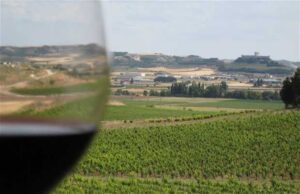

Unbridled Taste and Adventure
Discover the taste of Madrid that is more than just a vibrant city. Here, the wines reflect the heritage of the place. Imagine yourself savoring


Director of Wine Tours Madrid.
Wset 3 and Senior Viticulture Technician.


The Rioja DOC was the first wine region in Spain to obtain a quality seal for its wines. Developed as a region of quality long before other regions of Spain, Rioja wines owe their reputation to historical factors that few people know. Why, if Spain produces wines in any corner of its geography, was it only Rioja that managed to improve its wines so early compared to other areas? Well, basically because many Bordeaux winemakers found in the Rioja region the best terroir to continue making wines once phylloxera had wiped out the Bordeaux vineyards.
Phylloxera, a subway pathogen that arrived from the USA in the second half of the 19th century, wiped out 90% of European vineyards in a few decades. In Spain, phylloxera first entered through the Mediterranean coast and eventually colonized all the vineyards of the peninsula. When the vineyards of Bordeaux were destroyed by phylloxera, the French chose Rioja as one of their main supply points. The Rioja region offered suitable climatic conditions and logistical facilities for transporting the wines via the Haro-Bilbao railroad to the port of Bilbao. However, at that time Rioja wines were still table wines, not very complex and lacking the refinement of Bordeaux wines.
The French taught many winegrowers to cultivate grapes in a different way, with lower yields and more aeration, thus achieving higher quality at the cost of reduced production. In the wineries, they introduced the most advanced techniques of the time, such as fermentation in wooden foudre, maceration of the skins with the must, refinement in oak barrels, bottling and aging of the wines. A great exponent of that era is the Estación district of Haro, populated by the industrial buildings of that time which, once the French had left, were taken over by the great dynasties that would make up the new reputation of Rioja: Viña Tondonia, La Rioja Alta, CVNE, Bodegas Bilbaínas, Gómez Cruzado, among others. Today, the neighborhood of La Estación, a must stop during our tour of Rioja, is the place in the world with the highest concentration of century-old wineries.
Today, Rioja is a DOC, a qualification it only shares with Priorat. Rioja wine is divided into three distinct areas: La Rioja Alta, La Rioja Alavesa and La Rioja Oriental. The Rioja Alavesa is part of the province of Alava in the Basque Country and is located on the slopes of the Sierra Cantabria. Its epicenter is Laguardia and it expands to other towns such as Samaniego or Elciego. They are smaller winemakers than in the other areas, with more familiar vineyards cultivated in a somewhat steeper terrain. In Rioja Alavesa we find wineries such as Marqués de Riscal, Valdelana, Luis Cañas, Ysios, Javier Sampedro, Remirez de Ganuza, Baigorri, Ostatu, Amaren and many others.
La Rioja Alta is the best known area of Rioja wine and belongs to the autonomous community of La Rioja. Its epicenter is the town of Haro, but it has other towns of great renown in the world of wine such as Cenicero, Briones, Briñas or San Vicente de la Sonsierra. Here, big brands coexist with wineries with a more family or cooperative identity.
Rioja Oriental is the southernmost area of the Rioja community and in it we find more abundance of grapes such as Garnacha. It is an area bordering Navarra, where some of its villages are also within the DOC Rioja.
Rioja wines are normally blends of two or more varieties. In the case of red wines, they are usually wines based on Tempranillo grapes blended with Mazuelo, Graciano and Garnacha. In the case of white wines, grapes such as viura are used, and they are usually blended with malvasía, which provides aromas of white flowers over the citric and white fruit base provided by macabeo. Due to the climate of La Rioja, the tempranillo grape usually needs a little more acidity and tannins, which are provided by more acidic and tannic grapes such as mazuelo (cariñena) or graciano. Garnacha, on the other hand, tends to provide smoothness in the mouth and notes of flowers and red fruits.
Rioja wine is blessed by climatic and geographical conditions that are almost unique in Spain. This region wedged between the Sierra Cantabria, the Sierra de la Demanda and the Sierra de Ezcaray escapes the harshness of the continental climate of the Cantabrian coast, the constant humidity of the Cantabrian coast and the torrid and extremely dry summers of the Aragonese and Mediterranean aridity. The area, bathed by the river Ebro, benefits from certain warm currents that penetrate the Mediterranean through the river and reach the Rioja, softening the climatic rigours that might be expected in such a northern region. In the Rioja, certain effects of the continental, Atlantic and Mediterranean climates coexist moderately on a very arid soil with a calcareous and clay base.
However, although the quality label arrived in 1927, for several decades Rioja was more a style of wine than a wine from a specific region. Even in the 1940s and 1950s, it was common for wine to come from other regions such as Aragón, La Mancha or Madrid, finishing the ageing and refining process in Rioja. What people were looking for was a fine wine with the stamp that Rioja winemakers were able to provide thanks to their modern ageing techniques. Once the denominations of origin and regulations were established and regulated, the possibility of moving quality wines from one region to another was eliminated, and today, as could not be otherwise, 100% of the wine labeled DOC Rioja comes from grapes grown within the DOC.
Rioja has a vineyard area of around 60,000 hectares, of which Tempranillo represents a very high percentage, which contrasts with the dominance of Garnacha until well into the 1960s. There are some 600 wineries producing wines and around 60% of the wine produced is exported outside Spain. At the national level, Rioja wines represent about 20% of the national wine demand and even today, the profile of Rioja wine determines for many Spanish palates what is a good wine. During our Rioja wine tour, you will learn about unique aspects of the history of these internationally renowned wines. You will taste exquisite wines made with such unique Rioja techniques as carbonic maceration. You will be able to go down into the subway cellars, excavated centuries ago for the preservation of wine. You will visit avant-garde wineries designed by famous architects and at the same time you will be able to meet Rioja families who have been making wine for centuries and centuries.
We will divide our experience in Rioja Alta and Rioja Alavesa, so that you can get to know both areas in depth and we will pay special attention to the gastronomy and the monumentality of their villages.
Let yourself be carried away by one of the most famous wine regions in the world and undoubtedly one of the most beautiful and emblematic places in Spain.


Discover the taste of Madrid that is more than just a vibrant city. Here, the wines reflect the heritage of the place. Imagine yourself savoring


The Wine Pleasure Promise is Wine Tour Madrid's commitment to each client. The wine tours in the region offer


The Adventure Among Vineyards awaits you behind every hill. Surprise yourself in every discovery with the wine tours near Madrid.
©2022 ALL RIGHTS RESERVED
WhatsApp us